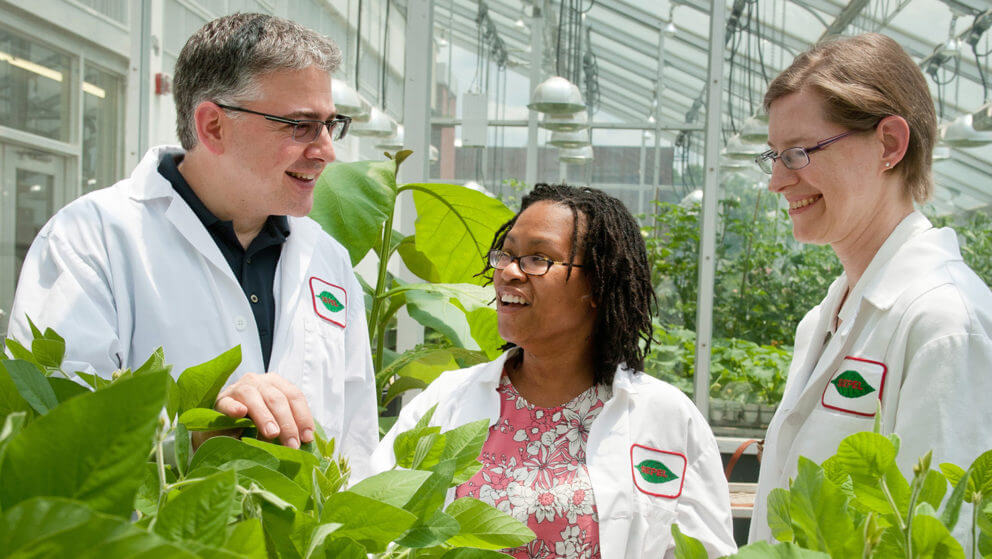With the label “New GM” or “GMO 2.0”, the activists (intentionally) failed to understand how the new technologies worked. Certain plant breeding techniques like CRISPR/Cas9 gene editing, cisgenesis or site-specific mutagenesis are not necessarily adding any foreign DNA into the organism. This blanket activist rejection was a monumental misstep, dealing perhaps a fatal blow to the hopes that organic farmers would ever be able to compete with conventional agriculture.
Why on earth did they shoot their farmers in the foot?
 Zealots to the front
Zealots to the front
The organic food lobby is a big tent, but the anti-industry, labeling faction has the strongest voice (and deepest pockets). A 2016 Corporate Europe Observatory (CEO) report, “Biotech lobby’s push for new GMOs to escape regulation”, encapsulated the madness of Radical Organic’s rejection of the innovative breeding techniques, putting it down to:
- Big Biotech. They see the development of the new technologies as further big industry dominance on farmers and consumers. Organic is perceived as small and traditional so the idea of Big Biotech patents on organic farmers runs against their marketing grain. The activists seem to have missed the low cost of these new technologies and how African researchers are using them to solve serious problems on their own.
- Non-transparent. Activists are afraid some plant innovations could be introduced without regulatory authorizations or may go easily undetected. The demand to have them treated in Europe as GMOs is to ensure new seed developments get lost in the tall grass of the endless EU approval minefield.
- Non-natural. It does not matter if a newly-bred plant has the same DNA as traditional plants. Campaigners will reject what does not come from a “natural” seed, or bred through conventional (natural?) processes. Now this may sound absurd (frankly, it is), but the activist cult believes that anything man (science) does will eventually end badly.
The activists’ strategy
The CEO report and the 2015 IFOAM NBT position paper were quite helpful in understanding the activist strategy. First, all innovative plant breeding technologies have been grouped together under the same label as NBTs, so if one breeding technique involves a foreign genetic modification, all are then categorized as “GMO 2.0”. Once that link is made, they then insist that the European Union considers all seed registrations based on innovative breeding technologies under the GMO regulatory regime, assessing them not on the basis of the product but the process. Add the tired but effective uncertainty communication campaigns and the activists can go home assured that the EU will be seed-technology-free for at least two more decades.
The longer the EU lets them play this game, the easier the scaremongering campaigns will be. There are two curious elements added to the organic lobby strategy: consider these plant breeding innovations as an American threat (recycling the anti-TTIP rhetoric) while preparing the ground for lawsuits should the European Commission take a “pro-science” perspective.
My advice for plant researchers
Until now, the research community’s response and the NBT Platform’s advocacy have had little effect or clear strategy. I would advise the following:
- Scrap the NBT label. The European Commission should not be pushed by NGOs to make a decision on whether the seven “new” techniques are GMO equivalents because, simply put, the seven are all distinct forms of plant breeding. Not grouping them in a single basket, some techniques then could work very well for organic seed development (whether the zealot fringe like it or not).
- Engage the food chain. The downstream food manufacturers will need to be woken up and encouraged to (finally) participate in this debate. The potential benefits of these innovative forms of plant breeding to the food chain are enormous – food producers cannot continue to stay silent and let the fear-mongers dictate their food strategies.
- Wake organic farmers up. Once again, the hardliners leading the organic industry lobby are taking farmers down the dead-end path of lower productivity and poorer quality seeds. Organic farmers need to clean out the radical gardeners from their movement.
- Stress the wonders and benefits of advances in genetic research. We are curious and positive toward genome developments in healthcare and would be equally open to these same innovations on seed technologies provided the following elements were widely understood:
- That the benefits are clear, welcomed and solve critical problems (particularly in developing countries)
- That the technologies are cheap, accessible and much of the research is done in universities
- That the researchers are individuals striving to discover, enhance and improve agriculture.
The window may not stay open much longer to tell these stories to an open and curious public.
Indeed, small organizations or academics breeding beneficial plants similar to traditional strains that reduce pesticides and improve agriculture is a story that activists in the organic lobby don’t want told to the general public.
Perhaps that is the main reason the activists are opposing the new plant breeding generation.
David Zaruk has been an EU risk and science communications specialist since 2000, active in EU policy events from REACH and SCALE to the Pesticides Directive, from Science in Society questions to the use of the Precautionary Principle. Follow him on Twitter @zaruk.
This article was originally published at European Seed as “The Risk Corner: Why is the Organic Lobby against NBTs?” and has been republished here with permission.
































